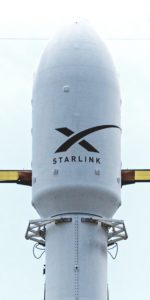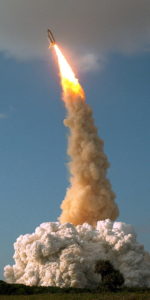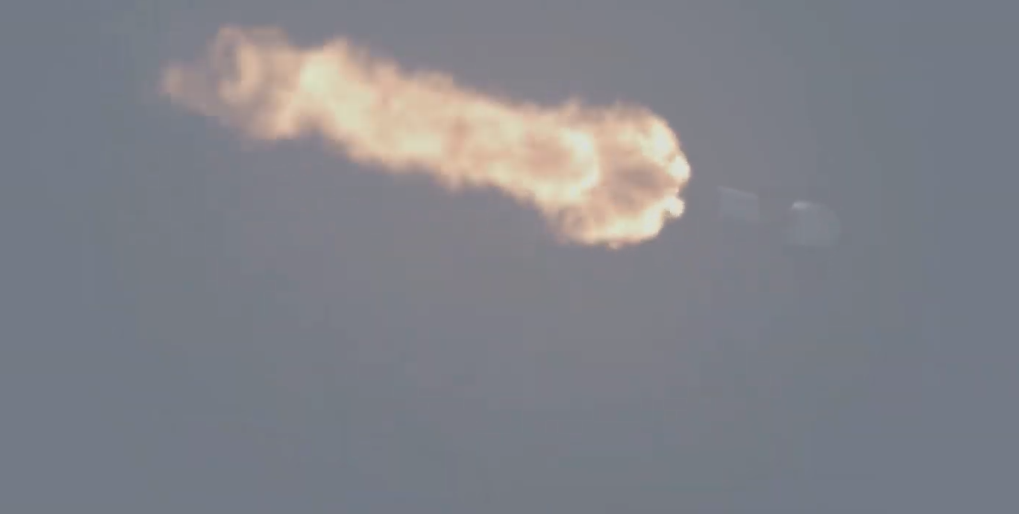
It is a rare occurrence these days that SpaceX launches a mission earlier than originally forecast, but that was exactly what happened at 3:31 p.m. EDT Wednesday, when a flight-proven Falcon 9 booster roared aloft from historic Pad 39A at the Kennedy Space Center (KSC) in Florida, carrying with it another 60 Starlink low-orbiting internet communications satellites.
As outlined in AmericaSpace’s preview article, this is the sixth batch of these small spacecraft to have been ferried to orbit in the last six months and recent observations of a “train” of Starlinks coursing through the night sky has caused some confusion and alarm, with members of the public even mistaking them for UFOs. It raises further concerns about the potential negative impact that hundreds of these satellites in orbit will have for astronomers and the mitigation of space debris.
With six missions already under its belt so far in 2020, SpaceX had already delivered four previous batches of Starlinks into orbit this year alone—twice in January and once apiece in February and March—as well as the long-awaited in-flight abort test of the Crew Dragon and the final Dragon cargo mission (CRS-20) to the International Space Station (ISS) under the terms of the first-round Commercial Resupply Services (CRS1) contract with NASA. Compared with previous years, the first quarter of 2020 has been an unusual one, with fewer commercial clients waiting in the wings as SpaceX has ramped up its launch rate and steadily cleared its existing books.
The worldwide march of the COVID-19 coronavirus has also played its part, forcing Argentina’s SAOCOM-1B Earth-imaging mission to slip indefinitely from its original launch date at the end of March. Additionally, the third member of the Block III Global Positioning System (GPS) network, previously slated for a late April flight, has slipped until no sooner than 30 June.

Between now and then, on 27 May, SpaceX intends to launch the first Falcon 9 with a human crew, as NASA astronauts Doug Hurley and Bob Behnken ride a Crew Dragon on the Demo-2 mission to the space station.
Follow our DEMO-2 LAUNCH TRACKER for updates and live coverage on launch day!
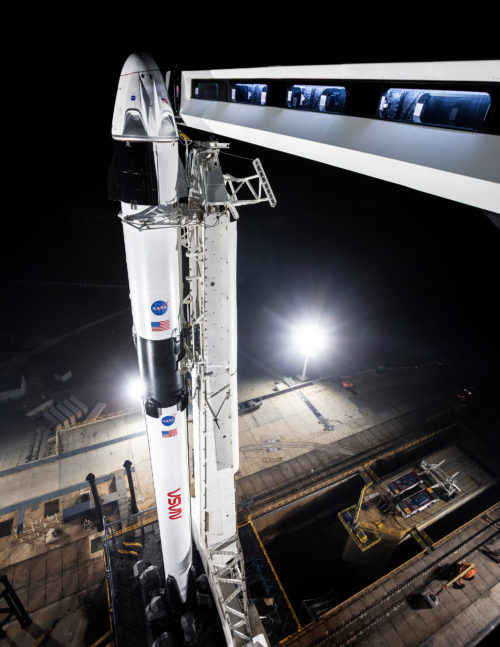

Today’s launch also served to assuage fears in the wake of February’s failure of one Falcon 9 core to land on the Autonomous Spaceport Drone Ship (ASDS)—due to incorrect wind-speed data—and another last month which suffered the premature shutdown of one of its nine Merlin 1D+ first-stage engines.
Originally tracking an opening launch attempt on Thursday, 23 April, the 210-foot-tall (70-meter) Falcon 9 stack was rolled out to Pad 39A for its customary Static Fire Test last Thursday, a full week ahead of liftoff. But late Monday, 20 April, SpaceX announced that an improved weather outlook on Wednesday, 22 April, had led to a decision to bring the launch forward by 24 hours. In its L-2 weather briefing issued on Monday, the 45th Weather Squadron at Patrick Air Force Base highlighted a 90-percent probability of acceptable conditions on Wednesday, as opposed to only 60 percent on Thursday.
Launch occurred at 3:30 p.m. EDT, kicking off SpaceX’s seventh flight of 2020 and its eighth mission in a row to utilize a previously flown booster. Tailnumbered “B1051”, this blackened and scorched Falcon 9 core had seen earlier service to deliver the first Crew Dragon on the Demo-1 shakedown test flight to the ISS in March 2019, after which it lifted Canada’s Radarsat Constellation Mission (RCM) last June and more recently a batch of 60 Starlinks in January 2020. Its two-piece payload fairing previously flew on last August’s AMOS-17 mission, making this flight the third in SpaceX history to utilize a flown fairing.
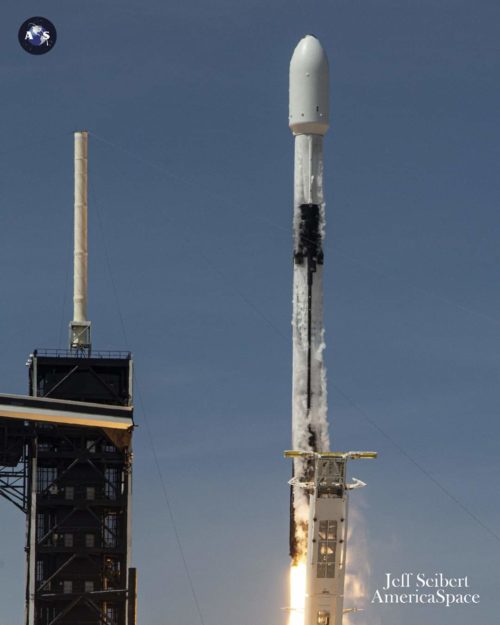
A little over two minutes into today’s flight, its task completed, B1051 separated from the Falcon 9 stack and commenced a smooth descent to alight on the deck of the East Coast-based ASDS, nicknamed “Of Course I Still Love You”. The drone ship was stationed approximately 390 miles (630 km) downrange of the Cape, with the fairing recovery vessels “Ms. Tree” and “Ms. Chief” standing by at 430 miles (695 km) for the fairing halves.
It was the third successful drone ship landing of 2020, out of five attempts, and went a long way to restoring confidence in SpaceX’s ability to bring its birds safely home. Meanwhile, the Falcon 9’s upper stage—powered by a single Merlin 1D+ Vacuum engine—continued the push to insert the next 60 Starlinks smoothly into orbit. Its six-minute “burn” provided the proper conditions for deployment of the satellites at 14 minutes and 51 seconds into flight.
“The Starlink satellites will deploy in an elliptical orbit approximately 15 minutes after liftoff,” SpaceX noted in its pre-flight press kit for today’s flight. “Prior to orbit raise, SpaceX engineers will conduct data reviews to ensure all Starlink satellites are operating as intended. Once the checkouts are complete, the satellites will then use their on-board ion thrusters to move into their intended orbits and operational altitude of 340 miles (550 km).”
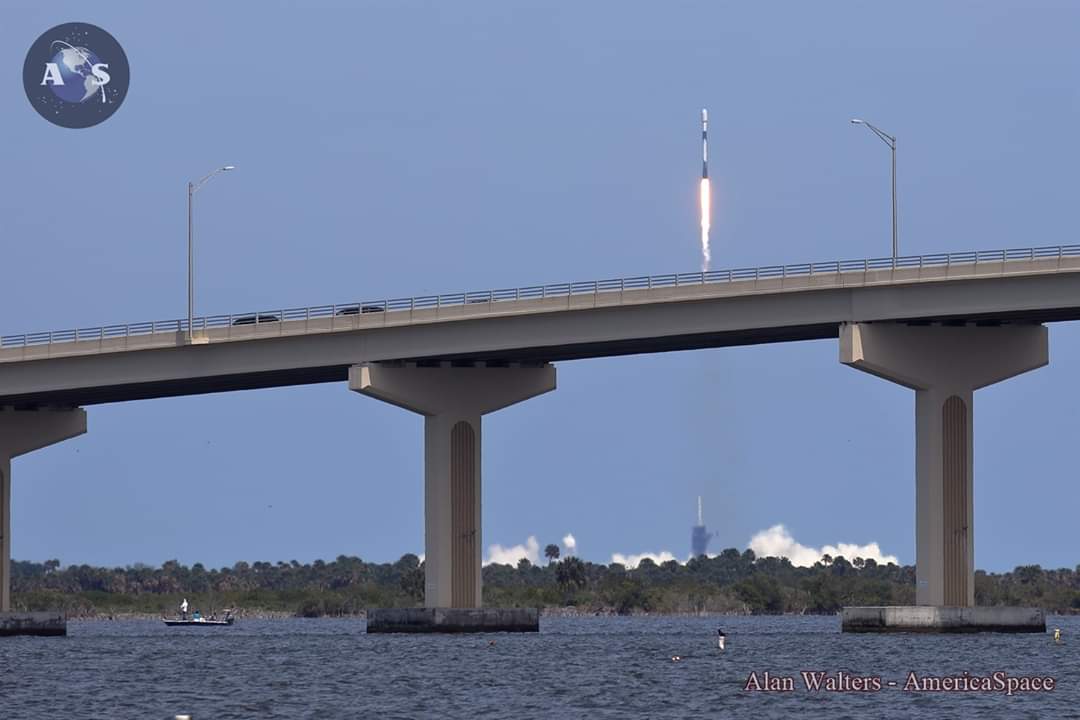
The $10 billion Starlink program, unveiled by SpaceX CEO Elon Musk in Seattle, Wash., in January 2015, has been described as a means of revolutionizing low-cost broadband provision. He identified it as a means of opening the way for competitively-priced services for urban regions and rural and underserved areas of the United States. Under the announced plan, an eventual constellation of 12,000 satellites could handle up to half of all backhaul communications traffic and a tenth of all local internet traffic in high-population-density cities by the mid-2020s.
Late in 2016, SpaceX described the concept as “non-geostationary” and revealed Starlink’s initial coverage would span the Ku-band and Ka-band regions, between 12-18 GHz and 26.5-40 GHz, respectively. By the late spring of the following year, plans were laid for a second orbital “shell” of satellites to utilize the V-band at 40-75 GHz, which is not routinely used for commercial communications purposes. Previously, the V-band has seen service for millimeter-wave radar research and scientific applications, but it reportedly also has promise for high-capacity terrestrial millimeter-wave communications networks.
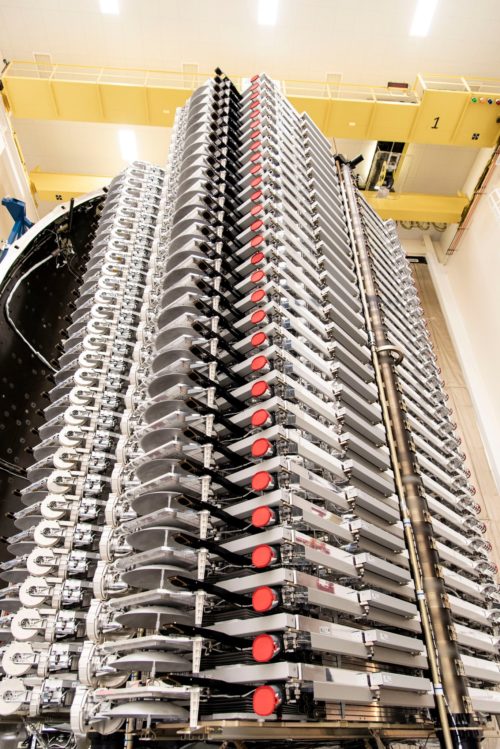
SpaceX’s original intent was for 4,425 Ku-/Ka-band Starlinks to reside at an altitude of 710 miles (1,150 km) and 7,518 V-band birds to sit at 210 miles (340 km), producing a total population of these small satellites by the mid-2020s. However, in November 2018 SpaceX received licensing from the Federal Communications Commission (FCC) to operate a third of the Ku-/Ka-band complement—some 1,584 satellites—at just 340 miles (550 km), much lower than initially planned. This will produce a relatively short operational lifetime of around five years, before they are maneuvered into a disposal orbit for controlled re-entry. SpaceX has explained that all satellite components are “100-percent demisable” and exceed “all current safety standards”, but the sheer volume of Starlinks to be launched in a relatively short period has aroused lingering controversy, both in terms of the work of astronomers and adding to ongoing debate about the effect of space debris.
Two Starlink test satellites, Tintin-A and Tintin-B, were launched in February 2018 and successfully validated the phased-array broadband antenna from an orbital perch 320 miles (515 km) above Earth. Then, last May, the first 60 “production-design” Starlink satellites were launched atop B1049. Although three of the satellites failed shortly after reaching orbit, the remainder are still healthy. More recently, in November 2019 and on four occasions in January, February and March of this year, a further four batches of 60 Starlinks apiece were boosted to space on three veteran Falcon 9 rockets. SpaceX President Gwynne Shotwell has already confirmed plans to launch further 60-strong sets of Starlinks approximately every two weeks throughout 2020.
.
.
FOLLOW AmericaSpace on Facebook and Twitter!
.
.
Missions » Commercial Space » Starlink »



